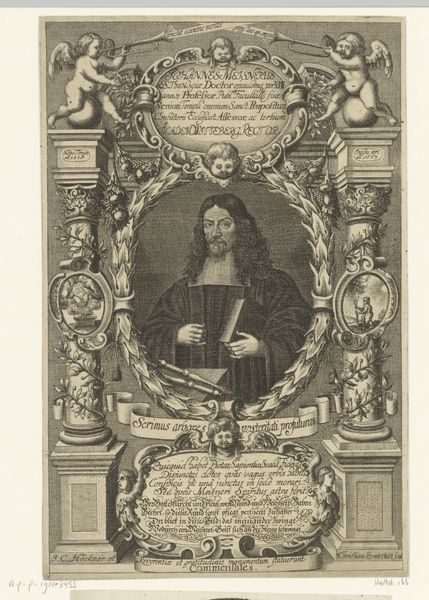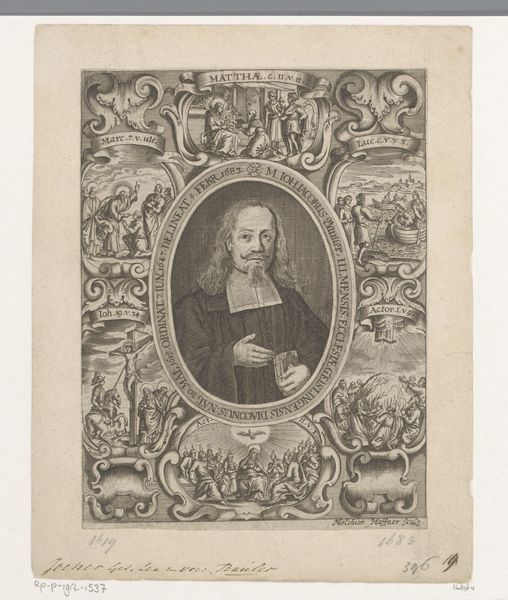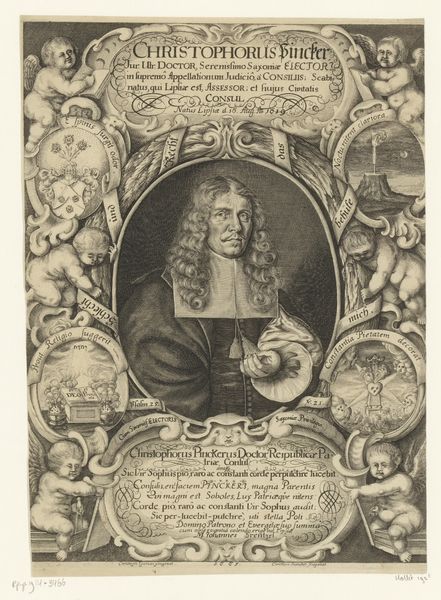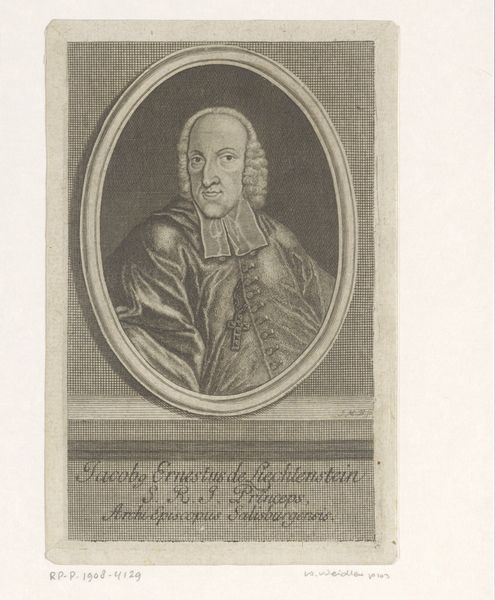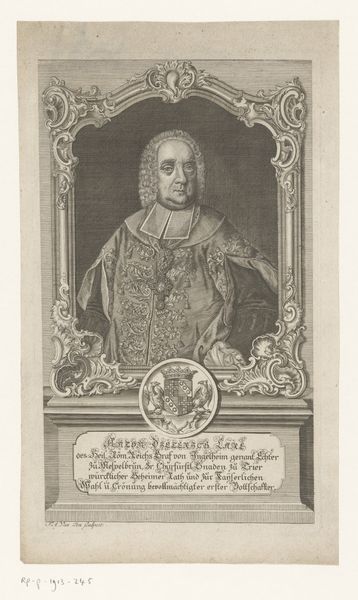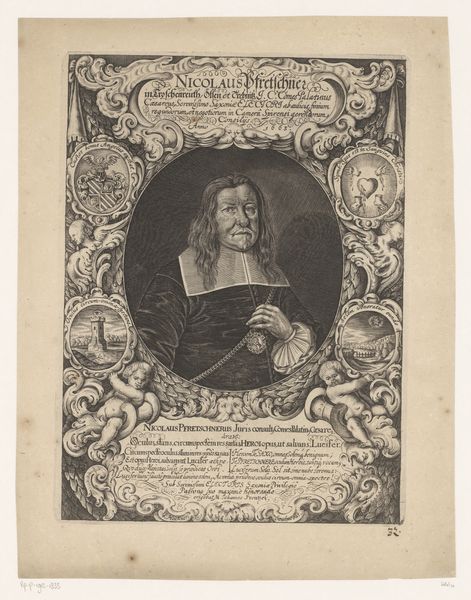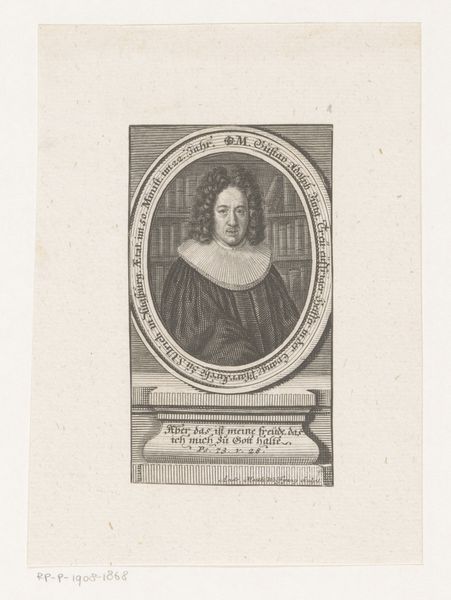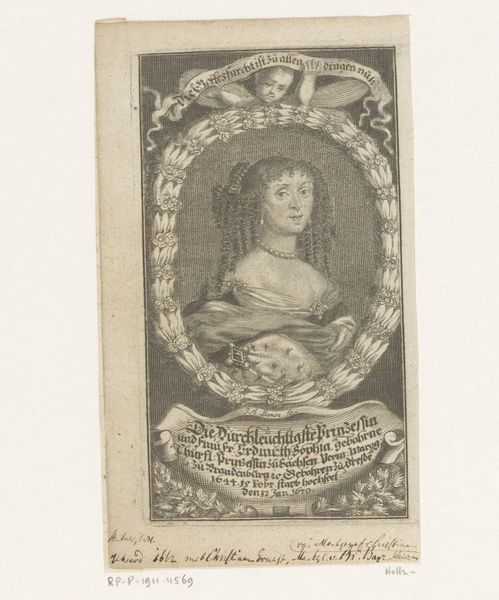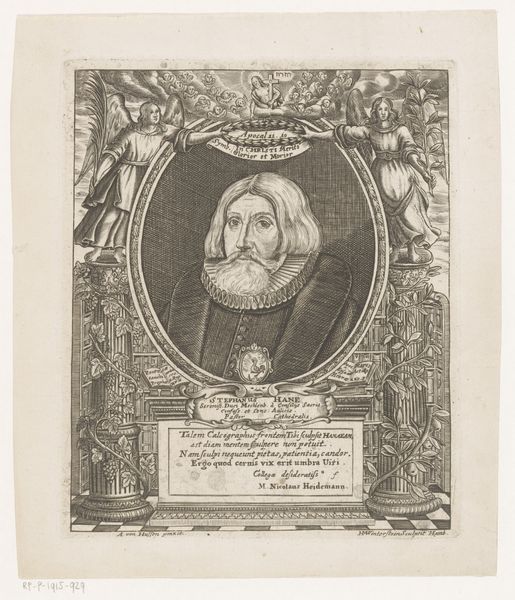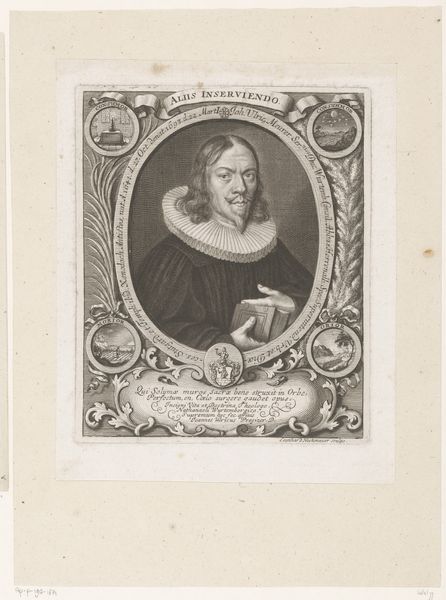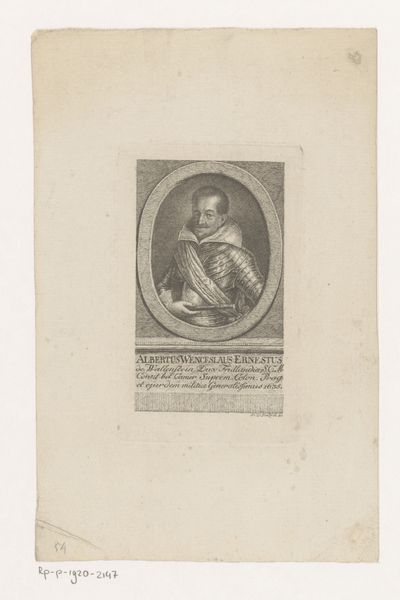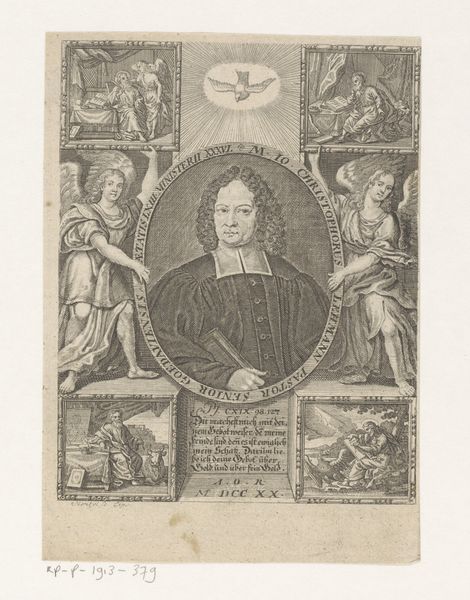
engraving
#
portrait
#
baroque
#
history-painting
#
engraving
Dimensions: height 176 mm, width 140 mm
Copyright: Rijks Museum: Open Domain
Curator: This engraving from the 17th century depicts Johannes Zechendorff, a scholar of oriental languages, by Johann Adam von Zehvell. Editor: It's overwhelmingly ornate, a true testament to Baroque sensibilities! There's so much going on with the text and flourishes surrounding Zechendorff's central portrait that I find my eye struggling to rest. Curator: Observe the carefully rendered lettering in Latin and Hebrew. Each detail serves to elevate Zechendorff's image to a symbolic representation of wisdom and erudition. The angels and emblematic imagery, the pillars and scrolls all speak to his elevated status within intellectual circles. Editor: Right, it’s printed rather than painted. Thinking about it as an engraving, it becomes a vehicle for dissemination. How many of these would have been made? And by whom? That act of reproduction significantly changes its relationship to power and influence in the community of scholars. I’m also curious what the paper substrate would have been in that time, whether linen, or cotton based. Curator: Exactly, it's a layered construction! Consider the symbolism, "Fidelitate" and "Pietate" are inscribed below scenes on either side. How do these virtues relate to Zechendorff? The composition leads our minds to the intellectual values cherished in his time, acting almost like an emblem for an age of reason underpinned by faith. Editor: True. Although from a purely materialist perspective, I wonder about the engraver. What kind of workshop was Zehvell a part of? The labour and time invested indicate Zechendorff was an important figure deserving the expensive operation of image production in Baroque society. The choice of the engraving technique allowed the information contained here to have further circulation in learned society, to celebrate a master. Curator: It is a fascinating artifact. It makes me consider how portraits serve not just as representations of individuals, but also as conduits for cultural ideals and shared values, wouldn't you agree? Editor: Indeed. It’s been a privilege to view the different ways this work reflects status and the production involved, along with the cultural ideals that it embodied.
Comments
No comments
Be the first to comment and join the conversation on the ultimate creative platform.
